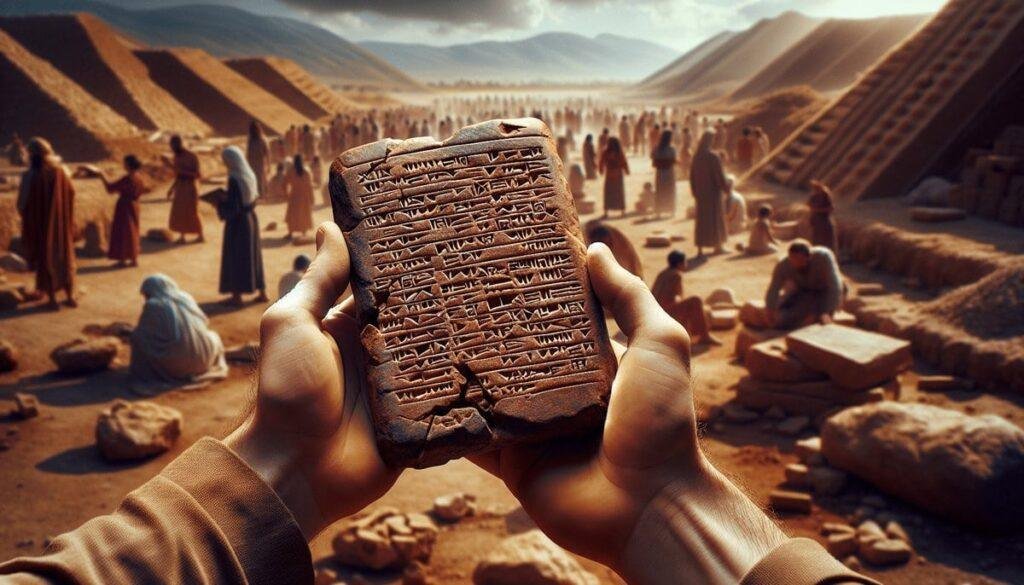Have you ever pondered the daily hustle and bustle of marketplaces that thrived thousands of years ago? The recent discovery of a First Temple Period market opens an intriguing window into such ancient commercial activities. This find is not just a monumental addition to the field of biblical archaeology but a vivid narrative of ancient economies and societies.
A fortuitous reflection of the biblical era, the newfound market offers a prism into the cultural, social, and economic facets of ancient Jerusalem. Carefully unearthed, examined, and interpreted by experts, this discovery allows for a tangible connection with the past, effectively bridging the history recounted in scriptures with archaeological evidence. Here, we delve into the key particulars of this discovery, the compelling artifacts unearthed, and the profound significance they hold for biblical, historical, and modern understandings.
Discovery Context
Biblical References and Historical Background
The First Temple Period, an era significant between the 10th and 6th centuries BCE, delineates a timeline frequently discussed in biblical texts. The period is distinguished by the reign of monarchs, constructions of monumental edifices, and vigorous trade. A prosperity symbolized by the First Temple in Jerusalem, constructed under King Solomon, it illustrates a confluence of spiritual and socioeconomic vibrancy. This temple, extensively referenced in biblical texts like the Books of Kings and Chronicles, narrates a tale of divine abode, imperial power, and economic vitality. It is against this rich backdrop that a newly unearthed market provides both a narrative and physical manifestation of these ancient accounts.
Geographic Location
Unveiled in the historic heart of Jerusalem, the market’s location is emblematic of its significance. With roots in one of the world’s most ancient cities, Jerusalem teems with stories from various eras, each layer contributing to its complex history. Nestled within the region traditionally recognized as the City of David, this marketplace lies proximate to other significant finds, enhancing its historical perimeter and cultural resonance.
Recent Findings
Recent archaeological pursuits have exposed remains of structures consistent with ancient marketplaces, such as sections of stone pavement and foundational remnants. The discovery was complemented by an array of artifacts—ranging from weights and inscriptions to pottery fragments. These serve as silent testaments to the commercial activities that once flourished, corroborating biblical narratives of an active, bustling hub of ancient economic life.
Archaeological Evidence
Specific Artifacts
The artifacts discovered paint a vivid picture of life during the First Temple Period. Notably, inscribed limestone weights signified a standardized system of trade and commerce reminiscent of biblical references to market practices. Pottery sherds, imprinted with the marks of their ancient creators, illustrate both the daily usages and artistic expressions of the period. Furthermore, the discovery of stamps and seals—bearing official insignia—sheds light on the bureaucratic oversight of commercial transactions, indicating a structured economic environment.
| Artifact Type | Description |
|---|---|
| Inscribed Weights | Standardized measurements for trading goods |
| Pottery Sherds | Everyday use artifacts offering insights into lifestyle |
| Stamps and Seals | Indicate administrative control and official dealings |
Dating Methods and Physical Descriptions
Dating these finds was performed via stratigraphic analysis and radiocarbon dating. The former, involving meticulous study of the soil layers and their sequential disposition, corroborated the timeframe to the First Temple Period. The physical characteristics of the artifacts—a convergence of design, material composition, and inscriptions—further affirmed their chronological placement. Each item, meticulously cleaned and conserved, now serves as an enduring relic of its era.
Expert Interpretations
Leading archaeologists, leveraging their extensive expertise, interpret these finds as indicative of a larger, organized trade network integral to Jerusalem’s economy during the First Temple Period. The artifacts accentuate the role of Jerusalem as a central trading hub, essential not only to the local economy but also to its connections with greater regional markets. Expert commentary likens the finds to “ancient tweets” detailing the nuanced activities and transactions of the time, providing historical context to contemporaneous textual accounts.
Significance
Biblical Implications
The discovery harmonizes with biblical references, offering credence to scriptures detailing the thriving economy. This market is seen as a microcosm of the economy narrated within biblical texts, illustrating the biblical portrayal of wealth, commerce, and societal interaction. It provides a tangible connection between the scriptural and archaeological, allowing believers and scholars alike to explore biblical narratives through an archaeological lens.
Historical Impact
Historically, the market enhances understanding of socio-economic structures in ancient Israel, illustrating the evolution of trade and its role in societal development. It highlights a complex network of trade routes, the intricacy of economic operations, and the interplay between political power and commerce in ancient Jerusalem.
Modern Understanding
In a modern context, this discovery enriches the historical narrative of Jerusalem. It sheds light on the ancient inhabitants’ daily lives, their economic interactions, and the cultural exchanges that shaped their world. The market serves as a vital puzzle piece in the broader mosaic of Jerusalem’s illustrious past, fostering an appreciation for the continuity and change experienced by this storied city.
Current Research Status
The market continues to captivate researchers who are delving deeper into its remnants. Ongoing excavations and analyses strive to unearth further insights, enhancing the context and depth of existing knowledge. This find not only invigorates current archaeological inquiry but also beckons future scholarly exploration.
Conclusion
The discovery of a First Temple Period market is a profound strike against the surface of Jerusalem’s textured history. Each artifact, each stone, and each inscription serve as a whisper from the past eloquently telling stories of an era rich in trade, societal development, and historical significance. As exploration continues, this market opens pathways for further research, inquiry, and understanding, contributing to an ever-expanding narrative that marries biblical accounts with archaeological revelation. You are invited to delve into these mysteries, enabling a deeper comprehension of how ancient histories shape our modern world.





